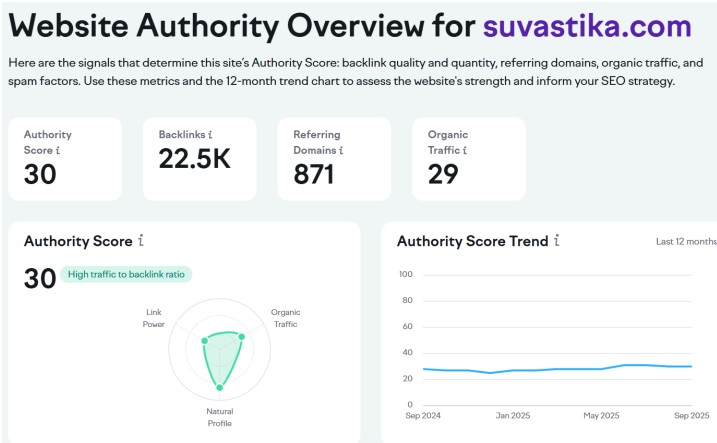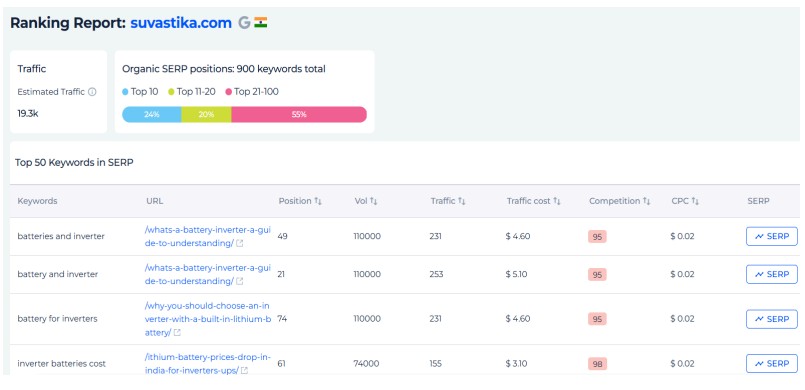Google’s num=100 Update: A Silent Shift That Shook the SEO World
For years, SEO professionals have relied on certain shortcuts to peek
behind Google’s mechanism. One such was this num=100 parameter,
which allowed users to view 100 results at once, with a default value of 10. But this wasn’t flashy and not well-known by some users; instead,
from the point of view of SEO agencies and tools that we depend on, it has
Overall, it shaped the way of collecting and understanding rankings.
Now, Google has quietly pulled the plug on it. On paper, it looks like a
minor change. In reality, it has left 77% of websites losing keyword
visibility and nearly 88% seeing a drop in impressions in Google Search
Console.
So what exactly is happening? Let’s break it down simply.
But first- How does Google actually rank pages??
Before digging in, it’s worth asking, how does Google actually decide
Which site lands on top??
Contrary to what some marketers still believe, Google doesn’t use Moz’s
Domain Authority, SEMrush’s Authority Score, or Ahrefs’ DR as ranking
signals. Those are third-party metrics built by tools for benchmarking.
Google’s own systems rely on hundreds of signals: content quality,
relevance to the query, backlinks, freshness, user engagement, page
experience, and much more.
The num=100 parameter was never used in the deciding rankings. It wasn’t
part of the algorithm. Instead, it was a lens through which we could see
more of SERP at once. This wider view gave a valuable context because
beyond one page lies a vast search troop, and being able to track keywords
in depth often revealed untapped opportunities.
So after Google’s update, the rankings themselves have not suddenly
changed, but the criteria to measure them did.

Read more here: https://kunwwer.ai/blog/f/what-is-domain-authority-breaking-down-the-myths-and-metrics
Why did (num = 100) matter so much?
Think of it in this way: if you are analyzing your website’s performance,
Would you rather see only the top 10 results or have the ability to check
where you are sitting at a position like maybe 37 or 65?
For SEO analysts, that depth mattered. It shows the long tail to discover
where the growth potential exists, which might not come at first glance.
More importantly, other platforms like SEMrush, Ahrefs, and all depend
on this trick to collect keyword data efficiently.
For them, it was one of those behind-the-scenes that made dashboards look
rich and detailed. If it disappears, the main industry’s data pipeline will be
shaken.
The Fallout: A Sudden Drop
The immediate aftermath was dramatic; almost overnight, SEO dashboards lit
up with red arrows pointing downward.
>Search console reported drops in impressions for nearly 88% of websites.
>over 3/4th of websites have seen a decline in the number of unique ranking
terms tracked.
>Average positions started looking “better” as bottom keywords on pages 10-15
weren’t being counted anymore.
To a client or executive glancing at a performance report, this looked like a
catastrophe. Fewer keywords? Lower impressions? It felt like rankings had
collapsed.
But had they really?
What’s Real? Was it Just Reporting Noise?
This is where the actual difference lies. Google didn’t suddenly rewrite its
ranking algorithm. If anyone’s website ranking was at 15 yesterday,
chances are it is still at 15 today.
What changed is “ our window into the data”. Without num=100, the
deep SERPs aren’t being recorded in the same way. That means the graphs
and numbers we rely on for insight purposes are no longer telling the full
story.
Clicks, content, quality, and traffic are the ultimate reality check here.
Many sites noticed impressions decreasing in Search Console, but actual
website traffic is held steady. That gap is the clue: what fell wasn’t
relevant, but just a measurement. Now let’s have a deep thought on what is
affected.

Tools Caught in the Crossfire
The update didn’t just affect site owners and SEOs — it hit the very tools
We rely on it to make sense of the search ecosystem.
Rank trackers like SEMrush, AccuRanker, etc, had long optimized their
crawlers around num=100. Suddenly, they were forced to paginate
through SERPs the old-fashioned way — slower, costlier, and
computationally heavy. Some passed these costs on; others are still
scrambling to adapt.
And then there are the authority metrics like Moz’s DA, SEMrush’s
Authority Score and Ahrefs’ DR are proprietary models that
Combine link graphs with estimated traffic and keyword visibility.
Since part of those scores completely leans on observed rankings and
traffic estimates, losing the num=100 lens introduces inconsistencies.
Scores might shift, not because your site became less authoritative, but
because the visibility dataset shrank.
Agencies and consultants are caught in a communication gap — how do
you explain to clients that their keyword count dropped by 30% overnight
when traffic hasn’t budged? And SEO tools themselves are under fire,
rushing to rebuild pipelines while users question their accuracy, explaining
numbers that don’t line up. It’s important to remember: these metrics are
useful benchmarks, but they are not absolute Google ranking factors. Still,
when they move, clients and stakeholders notice.
So, What Does This Really Mean for Rankings?
Here’s the irony: the rankings themselves haven’t shifted nearly as much
as the reporting suggests.
The real disruption is psychological and operational. Clients panic when
they see drops. Tools look shaky when their datasets shrink. Analysts are
forced to re-baseline years of benchmarking again. It’s less about losing
search positions and more about losing clarity in how those positions are
measured.
Maybe the best way to look at this update is not as a loss, but as a reset.
From here forward, impressions, keyword counts, and average positions
live in a new reality. Historical comparisons will always need that context.
Everything has its own pros and cons, and maybe that’s a good thing. It
forces us to focus less on vanity metrics like raw keyword counts and more
on the signals that truly matter: clicks, traffic, and conversions.
After all, what’s the value of ranking for a keyword buried on page 8
If no one clicks it?
The Future of SEO: Road Ahead After This Update
This change won’t be the last option. Google has been steadily limiting the
ways third-party tools can collect data from its SERPs. The retirement of
num=100 is one more step in that direction. For SEOs, it’s a reminder that
we don’t own the data — we borrow it. And when the rules change, our
job is to adapt, reset, and refocus on outcomes that truly matter to
businesses and agencies.
So while impressions may look scarier, and dashboards may feel
emptier, the fundamentals of SEO remain the same: create valuable
content, earn trust through authority, and aim for the positions that
actually bring in traffic.
Instead of treating this as a setback, SEO teams can use it as a reset
moment. Here’s how to turn this change into an opportunity:
1. Re-establishing benchmarks:
Treat September 2025 as a “reset point” for data. All future
comparisons should be based on this new baseline, but stop using
them as a reference for growth.
How to achieve: Create fresh dashboards in Google Search Console.
Analytics and rank trackers starting from September.After this
document average impressions, clicks, and positions as your new
baseline, so label this period clearly in reports, so clients and teams
know comparisons are post-change only.
2. Prioritize page 1 and 2 rankings:
Visibility beyond page 2 has become far less valuable from a reporting
standpoint. Optimize existing content and strengthen internal linking to
move terms upward.
How to achieve this: Identify keywords currently sitting between
positions 11–25 (page 2). These are your quickest wins. From here,
You can improve on-page SEO (titles, headings, and content depth) for
these terms, which will eventually strengthen internal linking from
high-authority pages to boost their chances of climbing.
3. Double down on quality content:
Long-tail opportunities aren’t gone — but they’ll require stronger,
more authoritative content to surface within the first two pages,
which can be done by:
~Auditing your existing content for thin pages and updating them
with depth, FAQs, and structured data.
~Using semantic keyword research (related questions, “People Also
Ask,” topical clusters) to enrich articles.
~Secure quality backlinks and citations to improve trust signals
4. Communicate proactively
Whether you’re reporting to clients, leadership, or internal teams —
explain that impression and keyword drops are partly due to the
number=100 retirement, not necessarily poor SEO performance.
You can do all this by adding clear annotations in GSC and
Analytics reports, marking when the change took effect. Setting up
regular Q&A or monthly reviews to reassure clients or leadership
teams.
Conclusion:
The num=100 update wasn’t a change to how Google ranks — it was a
change to how we “see those rankings”. It’s a new challenge in
prioritization, trust, and communication, not just a technical one.
SEOs must reassure stakeholders that while the numbers look different, the
performance underneath may be just as strong as ever. By resetting
benchmarks, focusing on top-two-page rankings, communicating clearly,
and strengthening content quality, SEO professionals can adapt quickly
and even gain an advantage over slower competitors.